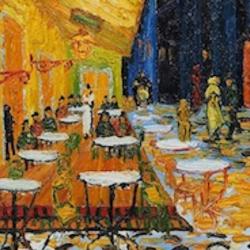Augustine Thompson (Cities of God) strongly disputes the notion that Italian urban communes of the late medieval period were “secular” organizations. They were religious, so much so that the city was defined and named as the seat of the bishop:
“The city: the church. The church: the bishopric. When the north and central Italian cities shook off imperial control and established their unique form of government, the commune, the word they used for city (civitas—citade) said that the municipality was the seat of a bishop. To have a bishop was to be complete as a church, complete as a city. . . . Strictly speaking, the episcopatus, the seat of the bishop, was his cathedral. Therein and -about unfolded the splendid public ceremonies and rites beloved of the poets. Great episcopal liturgies made it the Ecclesia Matrix, the Mother Church, of the diocese. . . At Bergamo in 1187, during an inquest to identify the city’s true Ecclesia Matrix, Canon Oberto of Mapello from San Vincenzo explained that in his church ‘the bishop is chosen, there the holy chrism is made, there ordinations take place, there the scrutinies are performed, and there public penances are given.’ His friend the sacristan, Don Lanfranco of Monasterolo, added that San Vincenzo was also the place for baptisms and, more ominously, for excommunications. Baptism made lay Christians, ordination made the clergy. Both orders of people, clergy and laity, were born at the Mother Church, the womb of their city. Over these rites presided the bishop, the pastor of the city church” (16).
The city-bishop’s authority didn’t end at the city walls but “extended into the contado, the countryside. The city fathers of Parma used the words episcopatus (bishopric) and civitas (city) as synonyms in their podesta’s oath and in laws and statutes.”
The cathedral’s liturgy imprinted itself on the liturgies of the surrounding churches: “One could tell a Sienese church, however far out in the countryside, because it modeled its ceremonies and worship on those at the cathedral of the Glorious Virgin. The clergy of Piacenza agreed; Piacentine rites identified a Piacentine church. Conformity to the ritual customs of the cathedral was an ancient rule, enshrined in canon law. Did the village of San Cesario belong to Bologna or to Modena? One need only check the liturgical books of the parish: the feast of Saint Petronio of Bologna outranked that of Saint Giminiano of Modena. The place was Bolognese” (16).
These liturgical networks were fundamental to the organization of the city and its relation to the surrounding countryside: “Liturgy more than geography mapped the countryside” (16).










